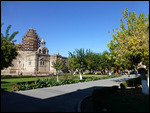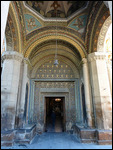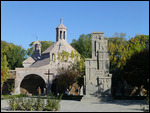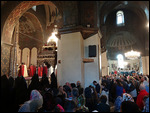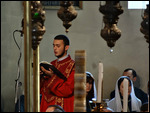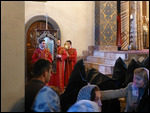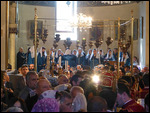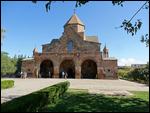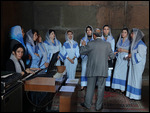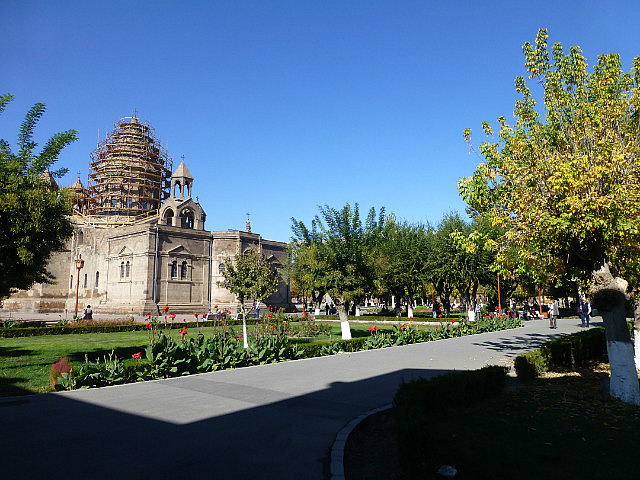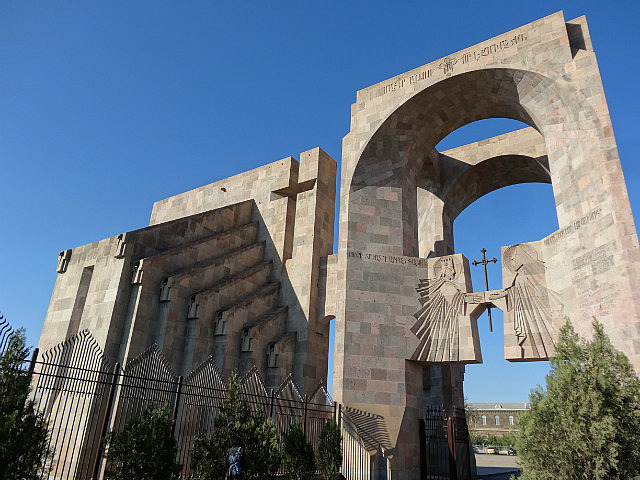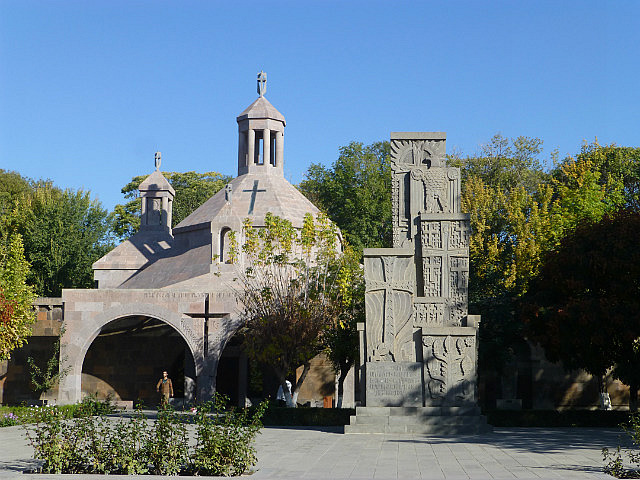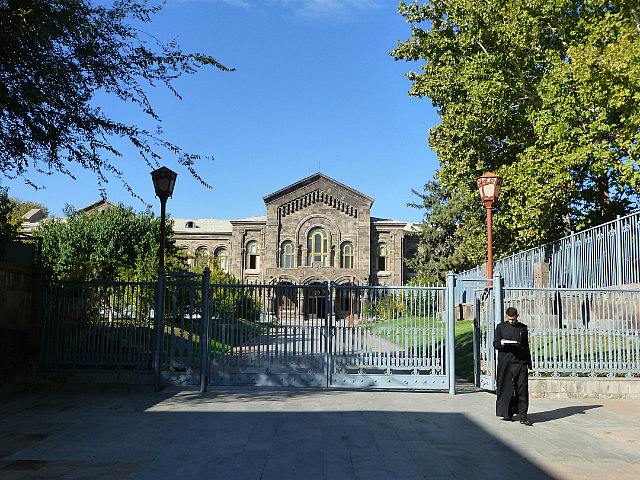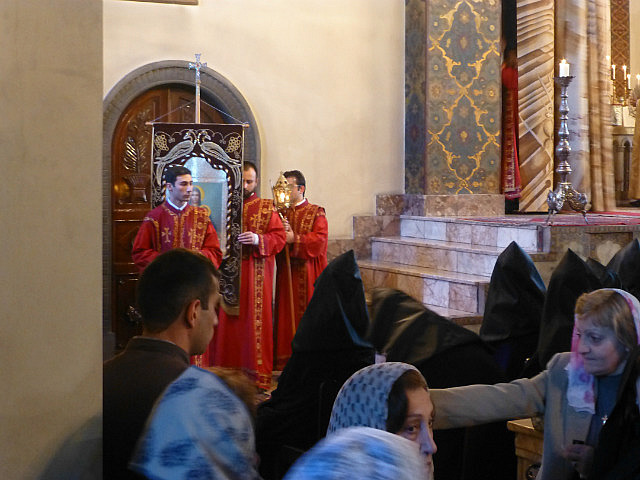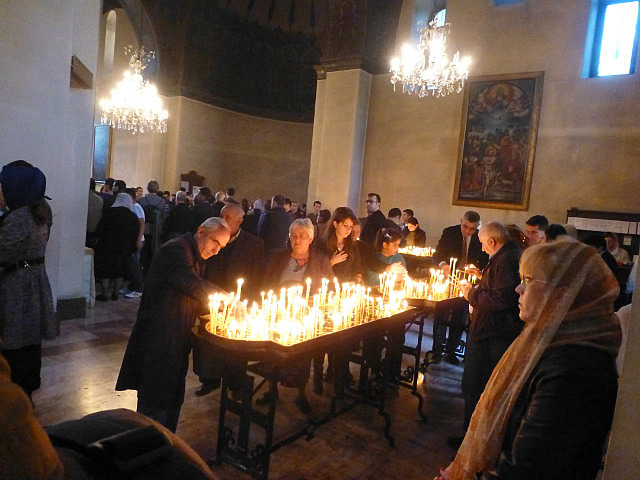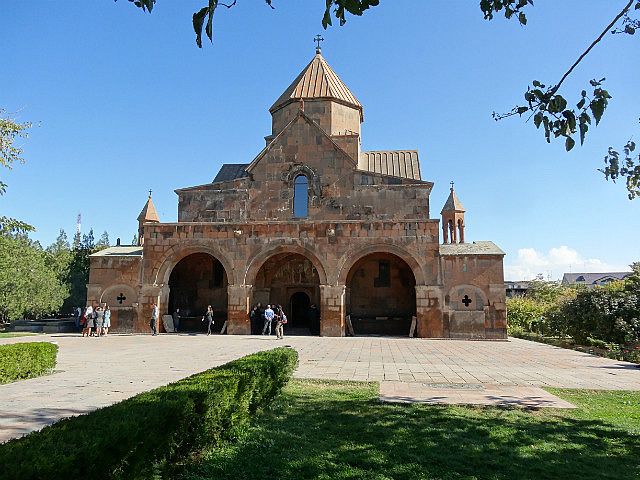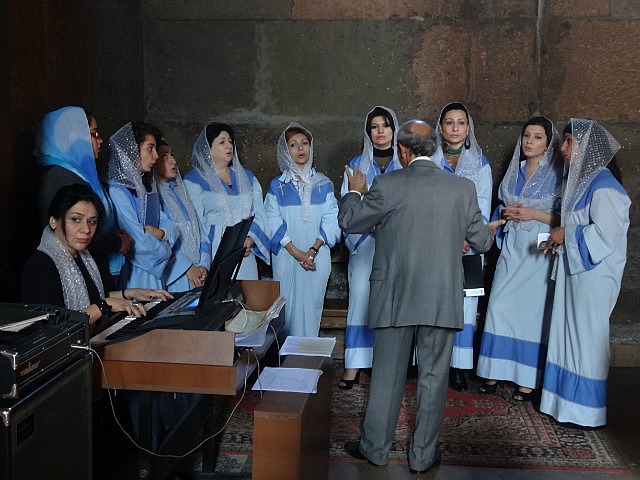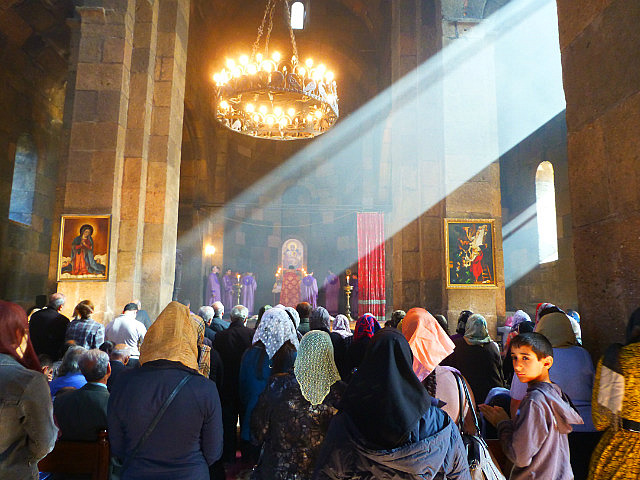Armenia was the first country to adopt Christianity as its official religion when St. Gregory the Illuminator converted King Tiridates III in 301 AD. Due to familial enmity, Tiridates had imprisoned Gregory in an underground pit (called Khor Virap) for 13 years. Legend has it that he was struck with an illness and was cured by Gregory which eventually led to his conversion. Later, Gregory had a vision of Christ's coming down to earth to strike it with a hammer (alternate: beam of light came to earth) and decided to build a church at the spot. The place was renamed Etchmiadzin (place of the descent of the only-begotten). The first Mayr Tachar (Mother Church of Armenia) is the equivalent of the Vatican for Armenians. Tiridates declared Gregory to be the first Catholicos. The Palace of the Catholicos is in front of the Mayr Tachar and is the home of the present Catholicos, who is the supreme head of the church.
The Armenian Apostolic Orthodox Church traces its origins to the missions of Apostles Bartholomew and Thaddeus in the 1st century and is an early center of Christianity. The schism between the Armenian Church and that of the Catholic and Eastern Orthodox schools arose out of the Council of Chalcedon which was convened in the 5th century in Istanbul to debate on the multiple natures of Christ. The Armenian Church later clarified that its position on the debate was misunderstood. The schism also caused the Georgian Church to break away from the Armenian Church.
Etchmiadzin is 20 km west of Yerevan and is a short ride from the capital. Sunday mass at the Mayr Tachar is considered a highlight and at the urging of our host, we spent more than an hour experiencing this inside the church in the company of several devout Armenians. The mass was more like an operatic performance with several parts assigned to different groups. A bearded head priest in a white robe and crown was accompanied by red robed priests. Hooded black figures formed another group. Yet another purple robed group of elderly white-bearded priests emerged in the middle of the performance. All along a choir consisting of turquoise robed female singers with white head covering, backed up by black robed male singers, stood by the side. A female conductor coordinated ther singing with the chanting and singing of the main group at the altar. The red robed group chanted and sang (even the head priest had a sonorous voice) and went on a procession through the attendees during the middle. It was a mesmerizing spectacle with some dramatic moves like the removal of the head priest's crown somewhere near the end. From a musical point of view, a young tenor singer (who detached himself from the altar group and moved to the front of the choir singers) sang a wordless air of breathtaking beauty that was the highlight of the performance.
There are several other churches in the vicinity and we chose to visit one other that was just a short walk from the Holy See. This was the Surp Gayane (St. Gayane) church, dedicated to the 3rd century abbess Kayane, who encouraged St. Hripsime to remain firm in her faith after being subjected to tortures by the Roman emperor Diocletan whose advances she had rejected. Kayane was martyred at the site where the church stands today. Inside the church, another similar performance was going on at a much smaller scale. V knew of the name Gayane from Aram Khachaturian's ballet which features the popular Sabre Dance.
